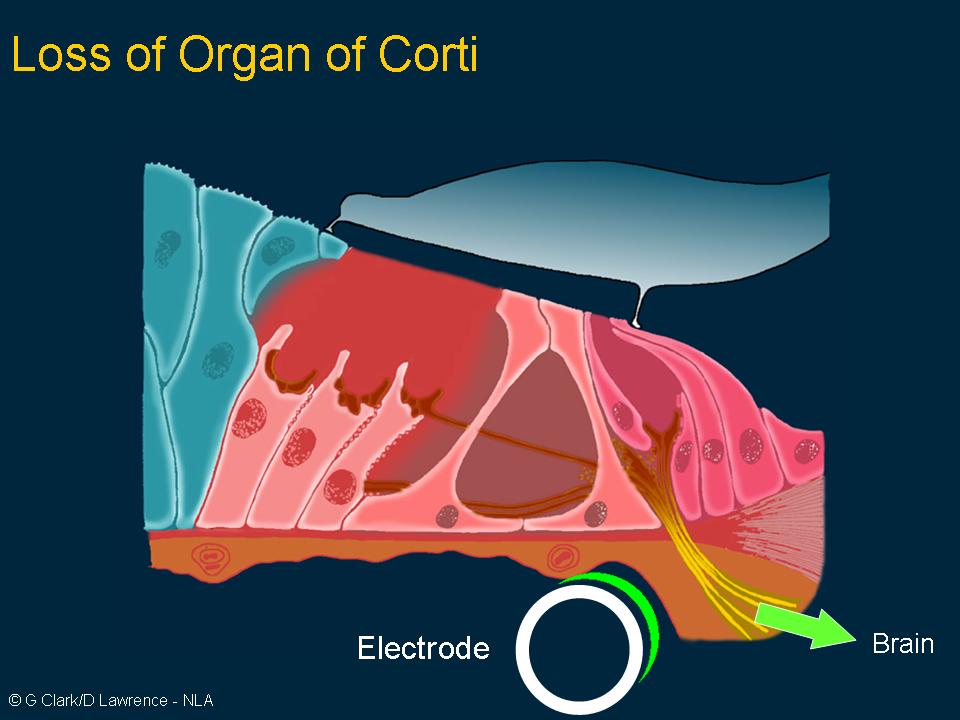How the ear functions in health and disease

The cochlea (inner ear)
With normal hearing, sound vibrations are transmitted along the ear canal to the ear drum and then via the small middle ear bones to the sense organ of hearing or organ of Corti, housed in the cochlea or inner ear.

The organ of Corti in the cochlea
The organ of Corti is a small structure that rests on the basilar membrane lying across the spiral cavity of the cochlea. Variations in stiffness of this membrane allows it to vibrate selectively to different sound frequencies, and so it acts as a sound filter. High frequencies produce maximal vibrations at the basal (base) end, and low frequencies at the apical (apex) end.

Temporal code
The encoding of sound frequencies by the brain, normally occurs through a temporal and place code. The temporal code is illustrated in this slide. The sound waves at a frequency of 500Hz are on the top, and the auditory nerve responses (action potentials), which are in time with the sound waves, are on the bottom. Note too that the intervals between the nerve action potentials are important for coding the frequency. So we hear and understand the pitch of a sound according to the timing of the brain cell responses.

Place code
With place coding the inner ear filters the frequencies, and high frequencies excite the basal end of the cochlea and low frequencies the apical end. The different frequency regions are connected spatially to all the centres in the brain so that a frequency scale is preserved. In other words, we recognize the pitch of a sound according to the site of stimulation in the brain.

The organ of Corti in deafness
This diagram shows the Organ of Corti in deafness. With severe-to-profound deafness, there is a marked loss of hair cells and as no sound vibrations can be transmitted through them to the brain, amplifying sound with a hearing aid will not lead to speech comprehension.
So the challenge was could electrical stimulation of the auditory nerve bypass the cochlea and reproduce frequency and intensity coding and lead to speech understanding? The idea underlying the cochlear implant, or Bionic Ear, was to then artificially stimulate those hearing nerves with patterns that would be similar to those that are created by sound with standard hearing.
